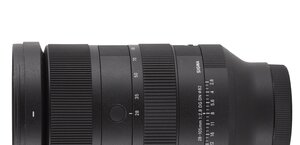Tokina AT-X 116 PRO DX II AF 11-16 mm f/2.8
4. Image resolution
Let’s check how the tested lens compares here, starting from the centre of the frame.

Please Support UsIf you enjoy our reviews and articles, and you want us to continue our work please, support our website by donating through PayPal. The funds are going to be used for paying our editorial team, renting servers, and equipping our testing studio; only that way we will be able to continue providing you interesting content for free. |
- - - - - - - - - - - - - - - - - - - - - - - - - - - - - - - - - - - - - - - - - - - - - - - -
As you can notice it can only be praised. At the maximum relative aperture, for both ends of the focal length spectrum, you get MTFs as high as 45-46 lpmm which is a very good result. Even the lowest value in the centre of the range remains good, amounting to 40 lpmm so safely above the decency level. On stopping down the performance becomes simply brilliant – the lens doesn’t have any problems with reaching 50-52 lpmm and at 13.5 mm focal length it can even get as high as 54 lpmm which is almost a record-breaking value.
Now let’s check the edge of the frame.

The situation is not as good as before. The performance is very even, that’s true, but at the same time, at the maximum relative aperture, all focal lengths provide images which are far from being fully useful. Only on stopping down to f/4.0 the image quality improves, becoming truly good from f/5.6 onwards. It is worth mentioning, though, that the most serious rival of the Tokina, the Sigma 10-20 mm f/3.5 EX DC HSM, also had problems with reaching the full usefulness at the maximum relative aperture; mind you the Sigma is by 2/3 EV slower.
Taking into account the excellent performance in the frame centre and comparing the performance of the rivals, our assessment of the Tokina 11-16 mm II in this category should remain very positive.
The crops below were taken from JPEG files saved along RAW files, used for the analysis presented above.
 |






